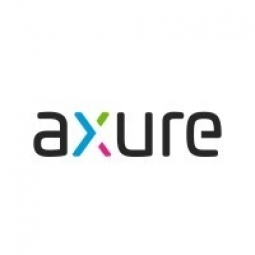Case Studies.
Add Case Study
Our Case Study database tracks 22,657 case studies in the global enterprise technology ecosystem.
Filters allow you to explore case studies quickly and efficiently.
Download Excel
Filters
-
(2)
- (1)
- (1)
-
(2)
- (2)
-
(1)
- (1)
-
(1)
- (1)
-
(1)
- (1)
- View all 5 Technologies
- (4)
- (3)
- (1)
- (4)
- (2)
- (3)
- (1)
- (1)
- (1)
- (1)
- View all 5 Use Cases
- (2)
- (1)
- (1)
- (4)
Selected Filters

|
Objective-Based Design: A Case Study on Digital Telepathy's Unique Approach
Digital Telepathy, a San Diego-based design firm, has a unique approach to design called Objective-Based Design. This process involves a constant flow of conversation with clients to build products, design experiences, and solve business challenges. The challenge lies in maintaining this constant dialogue and collaboration with clients throughout the project. The firm creates various assets to spark discussions and move the dialogue along. However, these assets need to be effectively managed and updated to reflect the most recent design decisions. Furthermore, the firm also needs to ensure that the conversation continues even when the project is passed along to other stakeholders.
|
|
|

|
Streamlining Design Collaboration in a Distributed Team: A Case Study
The case study revolves around a project led by John Henry Krahenbuhl, Lead User Experience Designer at Epsilon, for a product launch microsite. The project faced several challenges. Firstly, it had to cater to the interests of multiple client stakeholders, all on a single page. Secondly, consensus had to be reached among the members of a cross-functional team at the agency. Lastly, all this had to be achieved quickly in a distributed work environment. The team consisted of about five core members, with several more who floated in and out as needed. The team was globally distributed, and the client base was also global. The project required fast, efficient, and flexible solutions. The client needed low to medium fidelity assets, along with documentation. The wireframes could be grayscale, and 90% pixel accuracy was sufficient.
|
|
|

|
Implementing UI Standards for Unified User Experience: A Case Study on ZS Associates
ZS Associates, a global professional services firm, underwent a company-wide rebranding in 2014. This presented an opportunity for a systematic, standards-based approach to the design overhaul of their product portfolio. The challenge was to develop a consistent look and feel across all software products, with a single set of interaction patterns. The UX team, led by Elizabeth Benker, aimed to create a central repository for design standards, working examples, and functional assets that could be accessed by UX designers, product managers, front-end developers, and consultants. However, the lack of documented standards was causing alignment issues across teams and frustration among new team members. The team also struggled to find the right tool to create and distribute the new design framework, as many of the available options were not suitable for their needs.
|
|
|

|
Transitioning a Design Team to Interactive Prototyping: A Case Study at Harvard Business Review
Dani Nordin, UX Director at Pegasystems, was tasked with transitioning the design team at Harvard Business Review (HBR) from creating static mockups for large screens to interactive mobile-first prototypes using Axure. The challenge arose from a disconnect between the design team's creation of documentation for the development team and the way the development team built things. The design team was primarily focused on the larger screen experience and presented their work in static comps due to short timelines and an impression that stakeholders couldn’t “think in mobile”. This resulted in an inconsistent experience across devices as the front-end team had to interpret how the designs would adapt to smaller screens. This led to communication breakdowns and frustration across the team. Nordin's key recommendation was to shift from static comps to interactive, adaptive Axure prototypes.
|
|




